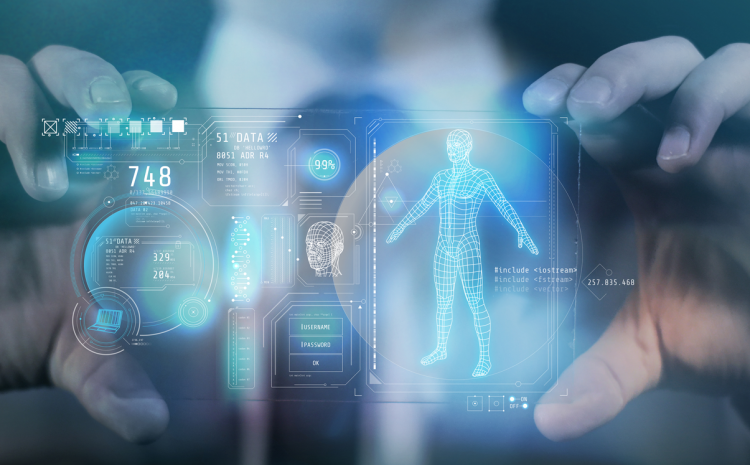

Know the endocannabinoid system and its importance
Do you know that pleasant feeling you feel right after finishing a physical activity? The benefits from exercise have been subjectively described as a feeling of extreme happiness, euphoria and reduced pain sensation. Known as “Runner’s high”, this sensation is not restricted to marathon runners on duty or high-performance athletes, it is also reported by those who practice regular physical activity voluntarily.
From scientific studies, it has been found that the endocannabinoid system is primarily responsible for these mental and bodily benefits induced by physical activity. But what is the endocannabinoid system and how does it work?
The endocannabinoid system is responsible for maintaining the homeostasis of the body’s physiological processes, acting in the regulation of apetite, energy expenditure, in the modulation of neuroplasticity, inflammatory processes and pain signaling. As it is a lipid signaling system, its operation occurs from the synthesis of specific molecules, known as endocannabinoids, and its action on endocannabinoid receptors, whose coupling induces an intrinsic biological response in a given organ or tissue, such as the brain immune cells, intestine, heart, blood vessels.
Now that you know what the endocannabinoid system is, let’s better understand how it works in our body when activated. In a scientific study, students were recruited to perform two types of physical exercise, cycling and running, and to verify the response of the endocannabinoid system after its execution. The researchers observed that after performing both physical activities at the moderate level, the participants showed an increase in serum levels of anandamide, an endocannabinoid. This data shows that physical activity induces an increase in the levels of anandamide, which acts in regions of the body aimed at the sensation of well-being, to relieve pain and anxiety. In order to determine whether exercise intensity would influence the modulation of the endocannabinoid system, another group of researchers evaluated the serum levels of anandamide at different running intensities. They observed that moderate intensity, which increased heart rate by 70-80%, was responsible for the intensification of anandamide levels, showing that moderate-rate exercise is the one that most influences the endocannabinoid system.
Although the feeling of well-being and happiness is most often associated with physical activity, a study showed that not only exercises that demand the body bring this pleasurable feeling. In this research, individuals who participated in a choir were recruited to perform the following activities: singing, dancing, cycling and reading. According to the analysis of endocannabinoids, singing was the activity that most increased the levels of anandamide and palmitoylthalonamide (PEA), as well as intensified the positive thoughts and emotions in the participants. PEA is a component of the endocannabinoid system that is associated with reduced inflammatory process and pain signaling, with scientific evidence suggesting its use as a potential therapeutic agent in neurological and inflammatory diseases that cause pain. Thus, this data shows that other activities can induce the response of the endocannabinoid system, bringing benefits, such as positive thoughts and emotions, as well as reducing anxiety and pain. Another point emphasized in this study is the preference for an activity to greatly influence the physiological response, since singing was the one that brought the most benefits, as it was the activity that the group enjoyed the most.
The endocannabinoid system is essential to keep our bodies functioning and in balance. Its modulation by physical exercise causes positive effects for the body and mind. Scientific evidence of the action of the endocannabinoid system in the body suggests new potential therapies for the treatment of neurological and inflammatory diseases that are associated with pain, such as supplementation with PEA in patients suffering from chronic pain or the introduction of activities. these physical or not, in individuals who suffer from anxiety or depression. Therefore, value more the effects of the pleasant sensations you feel when you exercise.
Autor: Carolia Parga
Referrences:
Raichlen, D.A.; Foster, A.D.; Seillier, A.; Giuffrida, A.; Gerdeman, G.L. Exercise-induced endocannabinoid signaling is modulated by intensity. Eur J Appl Physiol.;113(4):869-75. 2013.
Stone, N.L.; Millar, S.A.; Herrod, P.J.J.; Barrett, D.A.; Ortori, C.A.; Mellon, V.A.; O’Sullivan, S.E. An Analysis of Endocannabinoid Concentrations and Mood Following Singing and Exercise in Healthy Volunteers. Front. Behav. Neurosci. 12:269. 2018.
Dietrich, A.; McDaniel, W.F. Endocannabinoids and exercise. British Journal of Sports Medicine; 38:536-541. 2004.
Sparling, P. B.; Giuffrida, A.; Piomelli, D.; Rosskopf, L.; Dietrich, A. Exercise activates the endocannabinoid system. NeuroReport; 14;17, 2209-2211. 2003.
Artukoglu, B.B.; Beyer, C.; Zuloff-Shani, A.; Brener, E.; Bloch, M.H. Efficacy of Palmitoylethanolamide for Pain: A Meta-Analysis. Pain Physician.;20(5):353-362. 2017.
Lu, Y.; Anderson, H.D. Cannabinoid signaling in health and disease. Can J Physiol Pharmacol.;95(4):311-327. 2017.





